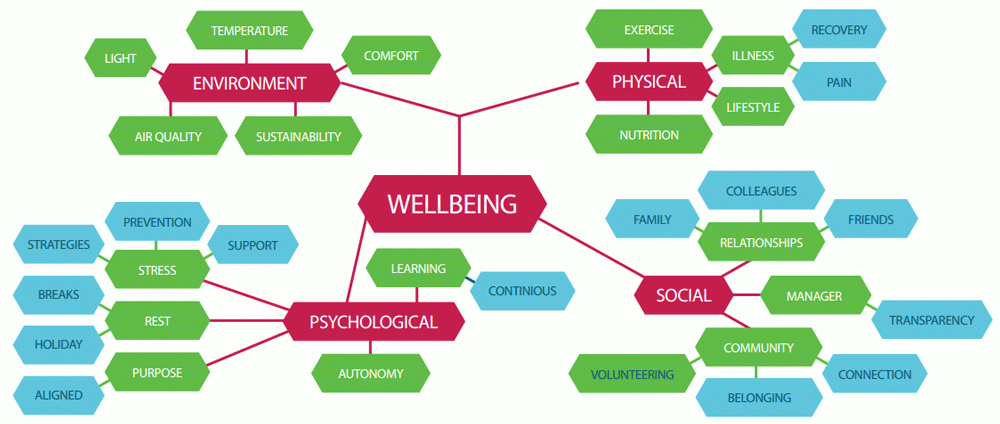“When ‘I’ is replaced by ‘We’, even ‘Illness’ becomes ‘Wellness’.”
Employee wellbeing in the workplace is a key issue that organizations endeavour to deliver to guarantee that their workers stay happy, engaged and motivated at work. It is linked to employee engagement and productivity, and an organization becomes stronger across the board when they make it a priority. All things considered; a happy and satisfied workforce is a beneficial workforce. We will take you through how to consolidate employee wellbeing practices into your office.
Employee wellbeing also depends on the workplace environment, but since the accelerated changes in business practice due to the COVID-19 outbreak; the workplace environment is now replaced by the temporary workstation at home. So, we will list our tips to improve the employee wellbeing keeping these changes in mind. But before we begin, let’s get to know the basics and the pillars it is based on.

1. Let employees set their own goals and work strategies.
Most job positions in your organization likely come along with an expected set of responsibilities and a lot of pre-set objectives. Knowing how those pre-defined objectives advance the organization and probably motivate the employees to accomplish their best work, allowing them to build techniques and strategies within the task. This may result in feeling much more boosted in achieving their own as well as company set goals. While workplace autonomy covers a range of factors besides setting goals, giving employees the freedom to creatively contribute is a solid wellbeing choice for companies who do not have the option to offer things like flexible work hours. To give employees more autonomy without the risk of undermining the core goals of the organization, you can create a structured framework or plan for employee goal setting to ensure it is a win-win situation, that is, everyone gets something out of the process. Layout the generic company-wide strategic objectives for your employees but let them create their own plans for achieving those same goals. This will allow your employees to feel included and engaged, thus keeping them satisfied and improving their wellbeing in the physical or virtual workplace.
2. Encourage employees to develop friendship via virtual water-coolers.
It should not be a surprise to anyone that building enduring companionships and friendships can be one of the most satisfying parts of our lives and one of the outstanding wellness strategies you can cultivate. Moreover, it is intriguing to discover that recent research demonstrates that when working in a group, friends outperform outsiders. Now, it has been proven that working with friends not only makes us feel good but also produces better results; organisations should focus on enhancing such bonding through virtual water coolers as of now. Having a sense of security, support and acknowledgement at work can go far to improve execution and efficiency as social collaborations additionally discharge oxytocin. Moreover, when team members are friends and have a better understanding with each other, they coordinate tasks more effectively and successfully as they know each other’s strengths and weaknesses so that they can distribute work accordingly. After all, two minds think better than one. During remote workplace, virtual water coolers, such as virtual chats and calls, allow the remote employees to connect, create and innovate because sometimes great ideas are born through simple conversations.
3. Make Recognition and Praise part of your company’s culture.
One of the most desired yet the easiest to implement employee wellbeing strategy is to recognise employees for the hard work they put in and to praise their efforts and achievements. It is the simplest yet the most important aspect of motivating your employee, keeping them engaged and happy at their workplace. The recognition can vary from a simple pat on the back, a handwritten note, a formal mail praising the employee(s) efforts to a formal recognition such as ‘employee of the month’ award. This simple gesture of recognizing their efforts goes a long way to creating a positive emotional environment that supports employee wellbeing. Thus, focusing and improving employee wellbeing in the workplace is a smart strategy for building a strong business and working in the best interest of everybody at the organization.
ABL Recruitment team









